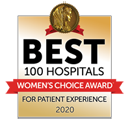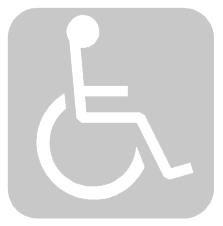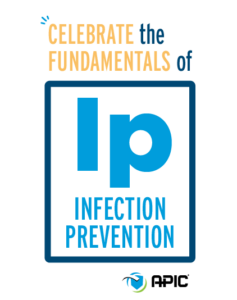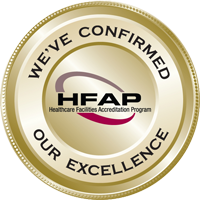- Home
- About
- Clinics
- Services
- Providers
- Patients
- Visitors
- News & Events
- Wellness & Prevention
-
-
Prevention is about staying healthy and preventing disease.
At Salem Township Hospital, we provide preventive care services to help you stay well. Following recommended screening and immunization guidelines can help you plan your care.
No one can avoid growing older, but you can take steps to extend your health and promote your well-being. Learn which small changes to your daily habits can help bring about big improvements in your health and quality of life.
-
-
- Resources
-
-
Employee Resources
- STH Email
- STH Epiphany
- STH PACS
- Net Learning
- NIOX VERO Instructional Videos
-
- Contact
Infection Prevention
Infection Prevention
Infection Preventionists. (IPs) play a crucial role in keeping the public safe and healthy. The infection prevention and control community protects us from surges in healthcare-associated infections, measles outbreaks, flu season, and so many other day-to-day infectious battles.
The Seven Strategies of Infection Prevention
- Hand Hygiene- Infection Prevention (IP) chooses 10 mystery surveyors throughout our hospital from all departments involved with patients to observe STH staff’s hand hygiene compliance. This data is turned into IP to help target training, interventions, and feedback to areas that need improvement and most importantly help STH to reduce HAIs. The report is given at IP quarterly meeting. Hand Hygiene is also monitored daily by our Department Heads and Supervisors.
- Environmental Hygiene- Our staff at STH are trained in how to use good environmental hygiene in each department. This encompasses effective cleaning of surfaces using appropriate products and decontamination of medical equipment and devices used in patient care. The IP RN works closely with Environmental Services, Laundry, and OR to ensure that the correct products from the EPA list are being used for cleaning, decontamination, and sterilization. IP also ensures direct care staff are using the correct cleaning products and using the correct dwell times for patient care items and surfaces. This category also includes safe and appropriate handling of sharps, blood, body fluid spills, waste, and linen. IP RN works with Human Resources monitoring all staff exposures ensuring the correct post-exposure policy is followed keeping all our staff safe and healthy. IP also assists in staff education for safe handling for prevention of exposure events.
- Screening- IP RN does daily IP surveillance on patients admitted to ER, Med Surg, and ICU. History and s/s of a new infection are monitored closely. IP assures the correct isolation precautions and that PPE is being used and used correctly. IP also monitors that STH employees are using best practices in our patients' everyday care (foley cath care, central line care, wound care, etc.) IP does real-time rounding with our in-patients who have a foley, central line, and dressings for wounds or post-op procedures. All this information is tracked and reported quarterly to our IP team. Any information that needs to be reported to the local health department is done. We also report to the National Healthcare Safety Network every month. They want to know our central line and foley cath days along with wanting to be informed of any hospital-acquired or surgical site infections.
- Surveillance- IP RN chooses one department each month to do a very thorough environmental round using rounding tools from CDC and APIC. Each department is surveyed by the IP RN yearly. Surveillance is also done daily by IP while walking throughout the hospital and while doing chart review. Data found during surveillance is reported to both STH IP and Safety teams. Surveillance is also done by our Department Heads daily in their area.
- Antibiotic Stewardship- This team is chaired by our Pharmacy Director Emily Blackburn who monitors the use of antibiotics given and prescribed at STH. IP sets on this team. Antibiotic Stewardship helps improve clinical outcomes and minimize harms by improving antibiotic prescribing. This effort is to measure and improve how antibiotics are prescribed by clinicians. Our pharmacy team rounds daily with Hospitalists when seeing patients on Med Surg and ICU.
- Following Guidelines- CDC and IDPH guidelines are followed for all IP practices at STH.
- Safety Culture- Safety is very important at STH. Staff are trained upon hire and throughout the year on how to keep our employee’s, patients and visitors safe. We have a Safety Team that meets monthly and also does environmental rounding quarterly looking for any concerns of safety throughout the hospital.
Infection Prevention Week
International Infection Prevention Week, est. in 1986, by Ronald Reagan aims to shine a light on infection prevention every year during the third week of October. This event promotes safer healthcare practices and helps reduce the threat of hospital-associated infections, benefiting patients. Infections ranging from hospital-acquired to those found in homes or workplaces can compromise healthcare workers' efforts and have a detrimental impact on public health. Every year, secondary infections cause thousands of health concerns in hospitals. Global pandemics are also sparked by the rapid spread of infectious pathogens. The International Infection Prevention Week's goal is to learn more about infection prevention and how it will improve patient safety.
The Association of Professionals in Infection Control and Epidemiology (APIC), a non-profit professional organization, was established in 1972. Their mission is to prevent healthcare-associated infections, and the organization currently serves over 15,000 members in 48 countries. APIC organizes this event every year. In Illinois, it is mandatory for hospitals to appoint one or more individuals as Infection Prevention and Control personnel responsible for the surveillance, investigation, prevention, and control of hospital-acquired infections (HAIs) and other infectious diseases.

“My promise to Salem Township Hospital and this community is to prevent, control, and investigate infections and communicable diseases at all Salem Township Hospital facilities. I will perform active surveillance for both patients and staff which allows me to monitor and identify infectious risks. Implementation and evaluation will always be made using best practice standards. I commit to exceptional care with prevention strategies to eliminate hospital and surgical-acquired infections through education, training, and raising awareness of best practices for patient safety.”
– Janelle Wilkerson, Infection Prevention RN

(618) 548-3194
1201 Ricker Drive
Salem, Illinois 62881

- About
- Accessibility
- Billing Information
- Cafeteria & Bistro
- Calendar
- Clinics
- Community Outreach
- Consider Your Options: Medicare Vs. Medicare Advantage
- Contact
- Contact Information
- Email a Patient
- Employee Benefits
- Employee Spotlight
- Employment Application
- Family Health Care Center
- Good Faith Estimate
- Home
- Hospital Charges
- Infection Prevention
- Leadership
- Medical Nutrition Therapy
- News & Events
- Notice of Privacy Rights
- Patient Rights & Responsibilities
- Patient Visit/ Procedure Checklist
- Privacy Policy/Terms of Use
- Resources
- Rural Health Behavioral Clinic
- Rural Health Orthopedic Clinic
- Rural Health Pain Management Clinic
- Rural Health Primary Clinic
- Rural Health Pulmonary Clinic
- Rural Health Surgical Clinic
- Salem Township Hospital Chapel
- Services
- Standards of Behavior
- STH MyChart
- Surveys
- The Pink Petal Gift Shop
- Visitors
- Wellness & Prevention

© 2025. Salem Township Hospital. All rights reserved. Price Transparency


